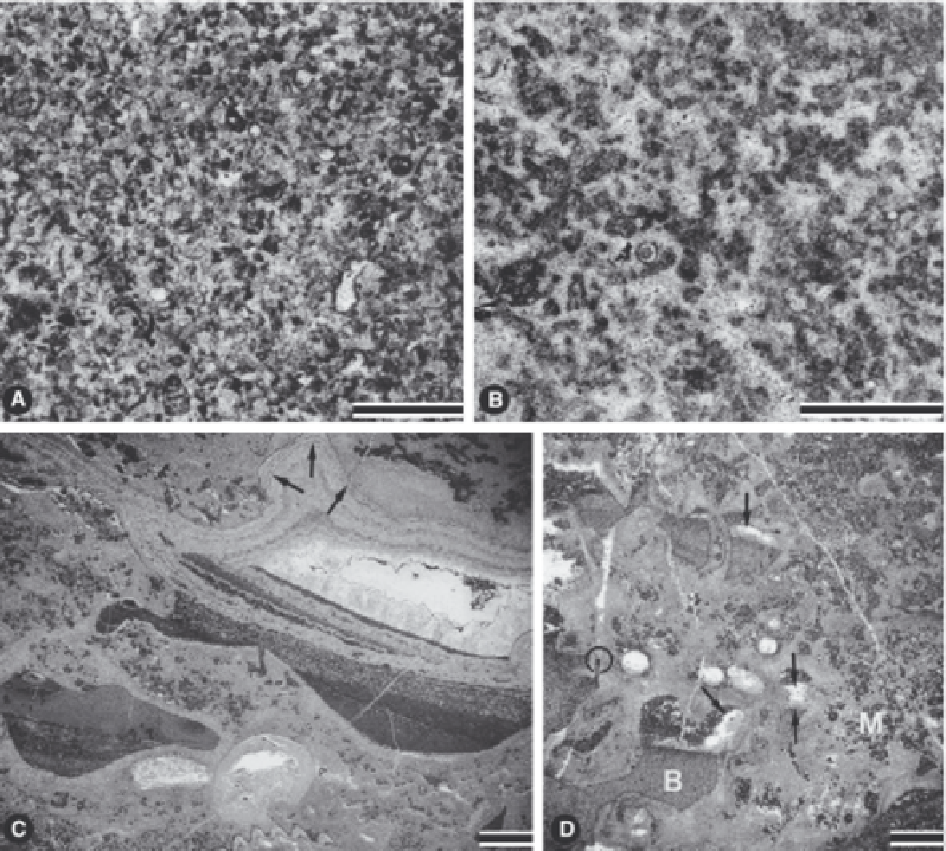Geology Reference
In-Depth Information
Fig. 15.27.
Stabilization of steep carbonate slopes by microbial automicrite and early cement.
The examples demonstrate
the important role of microbially mediated, in-situ precipitated micritic carbonate in the early lithification of steeply dipping
slopes. However, slope geometry is ultimately controlled by the angle of repose of layers differing in texture and grain size
(see Fig. 15.26). Triassic (Late Ladinian to Early Carnian): Slope of the Sella Platform, South Tyrol, Italy.
A:
Planar beds on the slope. Mechanically deposited sediment
. Fine-grained grainstone consisting of micritized peloids
and skeletal grains.
B:
Microbial automicrite
of steep slope beds.
The microfabric differs significantly from that shown in -> 1. Note the
very irregular outlines of the peloidal micritic aggregates and the sparry calcite cement areas. The aggregates consists of
peloids forming a loosely connected framework. Bioclasts are very rare. Water depth is estimated at 30 m based on the
vertical distance from correlative horizontal topset beds. Automicrite can be followed down to water depths of about 200 m.
C:
Automicrite layer of the topsets.
Internal cavity alternately filled by cement and sediment. The inclined cavity fillings
consisting of fine-grained peloidal sediment are interpreted as small foresets created by bedload transport. The growth of
fibrous cement is interrupted by thin micrite linings (arrows).
D:
Breccia of the steeply dipping slope deposits
. Slope breccias are cement-rich (up to 50% of the rock volume), and
almost matrix-free. The sample shows the high amount of calcite cement, clotted micrite (M), various tilted generations of
geopetals (arrows) as well as millimeter-sized cracks cutting through the fibrous cement. Note the different types of internal
sediments. The last phase of internal sedimentation is an infilling of basinal sediment (B) into a cavity. The same sediment
fills cracks (circle) cutting through the cement, demonstrating syndepositional cementation and fracturing. Cracks filled
with white calcite (top left) represent the youngest tectonic events.
A, B and C: Pordoi, southern margin of the Sella platform, Dolomites, Italy. D: Val de Mesdi, northern Sella. Scale is 2 mm.
All photographs from Keim and Schlager (1999).

